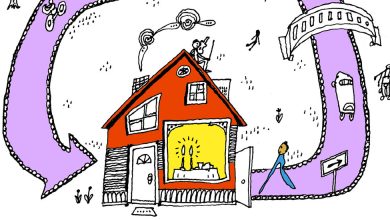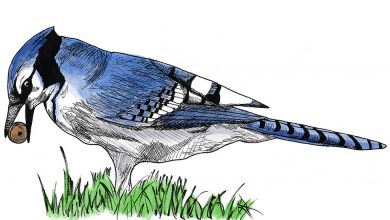Ending the School Mask Mandate in N.J. and Studying Wastewater in N.Y.

Good morning. It’s Monday. We’ll check the latest developments on several fronts in the coronavirus pandemic, starting with an announcement about mask requirements in schools that is expected today from Gov. Philip Murphy of New Jersey. We’ll also see why New York City weathered the Omicron variant and hear about viral fragments with only-in-New York patterns of mutations.

Credit…Jonathan Ernst/Reuters
Removing masks in schools, Gov. Philip Murphy of New Jersey said, is a “huge step toward normalcy.”
It is a step he is expected to take this afternoon. My colleague Tracey Tully writes that Murphy is expected to announce the elimination of a mask mandate for students and school employees.
He is signaling a deliberate shift toward treating the coronavirus as a part of daily life. And the change affects one of the most divisive issues of the pandemic.
The new policy will take effect during the second week of March, two years after New York and New Jersey became early epicenters of a virus that spread across the country, mutated and surged again. It has now killed more than 900,000 people nationwide — just over 65,000 in New York State and nearly 32,000 in New Jersey.
In New York State, where a school mask mandate is set to expire in two weeks, Gov. Kathy Hochul hinted on Friday that she was also considering revising mask and vaccine rules. “We’ll be making some announcements in the short term as we see these numbers progressing,” she told reporters. Children 5 and older are eligible for a shot. Last week Pfizer and its partner, BioNTech, asked the Food and Drug Administration to authorize two doses of their coronavirus vaccine for children younger than 5.
Murphy met with President Biden at the White House last week and suggested afterward that it was time to rethink how to manage the virus. “The overwhelming sentiment on both sides of the aisle,” he said on Wednesday, “is we want to get to a place where we can live with this thing in as normal a fashion as possible.”
New Jersey has required students to wear masks since September 2020, when most schools reopened. If the requirement is lifted, school districts could keep rules related to face coverings in place or scale them back.
In New York City, hospitals weathered Omicron
Murphy’s expected announcement looks forward as case counts are dropping. Looking back, the highly contagious Omicron variant stretched New York City’s health care system to the breaking point, but the system held together.
Some epidemiologists estimate that 40 percent or more of residents were infected. More than one in 10 public school students and about one in four school staff members had confirmed infections in the wave, according to state statistics.
But the assessment from health officials is encouraging. Experienced health care workers treated patients more effectively, and deaths were limited to a small fraction of the earlier toll — 2,846 from Dec. 5 to Jan. 22, compared with 18,700 during the three-month first wave in 2020. This was partly because Omicron was less deadly than previous variants, with fewer patients ending up in intensive care units, and also because millions of New Yorkers had been vaccinated.
[How New York City’s Hospitals Withstood the Omicron Surge]
Many questions remain unanswered. One involves something scientists found by sampling wastewater from New York City: viral fragments with unique patterns of mutations never before reported in human patients. Was it a sign of a new, previously undetected variant?
Scientists have been looking for the coronavirus in the city’s wastewater since shortly after the pandemic gripped the city. Sampling wastewater can provide an early warning that new variants are circulating, because people with the virus often begin shedding it before they get tested or seek medical care — if they ever do. Several communities detected Omicron in wastewater before any test samples from infected residents showed they had the variant.
But the sequences found in the New York water remain a puzzle. The researchers published findings in Nature Communications last week. The one certainty is that the sequences, or what scientists refer to as “cryptic lineages,” continue to appear. Some lean toward the notion that the virus is coming from people whose infections aren’t being captured by sequencing. Others suspect they are coming from infected animals, possibly rats — and by some estimates, there’s one rat for every four people in New York City.
I asked my colleague Emily Anthes, a science reporter who covers the pandemic and virus testing, to explain.
Is it the rats?
No one knows! They certainly seem like one possibility — the strange lineages seem able to infect them, and we know that there are plenty of rats roaming around the city. But there are arguments against rats, too. The virus has not been known to circulate among rats, and the researchers haven’t found any infected rats yet.
Are these sequences unique? How different are they from sequences from coronavirus patients?
They appear to be unique. In other words, the researchers haven’t found them in any genomic databases they’ve looked in. But it’s possible that the same sequences are circulating elsewhere and just haven’t been detected yet.
That said, do these lineages pose a health risk to humans?
There are a few threads to pull apart here. The virus itself is clearly a risk to humans. So you wouldn’t want to get infected by these lineages any more than you would want to be infected by any other version of the virus. But there is no reason to think that these particular lineages are uniquely dangerous to humans. We know, for instance, that they’ve been circulating for at least a year and have not overtaken Delta or Omicron — there’s nothing to suggest that these lineages are going to become the next major variant of concern. But there’s a lot that we still don’t know about these lineages in general, which is why scientists are trying to learn more.
You wrote that these lineages have been circulating long enough that researchers would have expected to see them in an infected person. Why haven’t they?
Another thing we don’t know! There aren’t a lot of great answers here, which is part of what makes it a good mystery. But it’s theoretically possible that we could just be missing these infections. After all, we know that not everyone who gets the virus is tested for it, and not everyone who is tested has their virus sequenced. So it’s possible that people who are infected with these lineages either do not realize that they are infected — perhaps because they have no symptoms — or have not sought testing or have not been in the subset of New Yorkers who have had their virus sequenced.
How did the researchers do their work?
They’ve been taking samples weekly from 14 wastewater treatment plants around the city since June 2020. In January 2021, they also started doing some targeted sequencing of the samples. The virus is fragmented in wastewater, so instead of sequencing the entire genome, they focus just on the spike protein, which is a vital part of the virus and one in which a lot of mutations tend to appear.
The Coronavirus Pandemic: Key Things to Know
The state of the virus in the U.S. The coronavirus has now claimed more than 900,000 lives across the country, and the Covid death rates remain alarmingly high. The number of new infections, however, has fallen by more than half since mid-January, and hospitalizations are also declining.
Boosters. New data from the Centers for Disease Control and Prevention confirmed that booster doses are most beneficial to older adults. For younger Americans, vaccination decreased the risk of hospitalization and death so sharply that the additional shot did not seem to add much benefit.
Around the world. Several countries are easing their pandemic protocols, though public health leaders at the World Health Organization continued to urge caution about relaxing restrictions. In Austria, a sweeping Covid vaccine mandate is set to become law.
Staying safe. Worried about spreading Covid? Keep yourself and others safe by following some basic guidance on when to test, which mask to pick and how to use at-home virus tests. Here is what to do if you test positive for the coronavirus, and if you lose your vaccination card.
Weather
There’s a chance of freezing rain first thing this morning, then a chance of drizzle at midday and chance of rain in the afternoon. The high will be around 40. There’s also a chance of rain tonight, with temps in the high 30s.
alternate-side parking
In effect until Saturday (Lincoln’s Birthday).
The top New York news
-
At CNN, unease has been mounting over the network’s corporate ownership, the firing of Chris Cuomo and a looming merger with Discovery.
-
Less than two months after seeking to form the only union at a prominent U.S. architecture firm, workers at SHoP Architects, in New York, have formally ended their effort.
What we’re reading
-
Rover the bald eagle made a home in and around Central Park. Its arrival adds to mounting evidence that birds of prey are returning to urban areas.
-
Last week was the first day of “Vegan Fridays” for New York City public schools. Eater reports on reactions.
-
The actor Adrien Brody returns to his first love, painting, and creates a skull painting at a borrowed artist’s studio in Brooklyn.
METROPOLITAN diary
Pacing herself
Dear Diary:
It was a brisk, but sunny, late-winter morning on the East River Greenway. I was approaching the end of an arduous 10-mile training run. I felt slow and sluggish and like it was not my best effort.
As I ended the run, I came to a stop just short of the East 34th Street ferry landing.
“Thank you,” a woman’s voice said from behind me.
I turned around, still catching my breath.
“I’ve been following you for about eight miles,” the woman, who was in jogging gear, said with a smile. “You helped me keep a faster pace than usual.”
— Catherine Feeny
Illustrated by Agnes Lee. Send submissions here and read more Metropolitan Diary here.
Glad we could get together here. See you tomorrow. — J.B.
P.S. Here’s today’s Mini Crossword and Spelling Bee. You can find all our puzzles here.
Melissa Guerrero, Olivia Parker and Ed Shanahan contributed to New York Today. You can reach the team at [email protected].
.





